Delivery Assurance Group (DAG) report: regulatory period 2015 to 2021
Report summarising what has been achieved for Scottish Water customers during the regulatory period 2015 to 2021.
Investing in Scotland's Water Industry: improvements delivered in 2015 to 2021
Introduction
Scotland's communities continue to enjoy the benefits of an ambitious investment programme by Scottish Water. Over the last six years drinking water quality and levels of service to customers have reached their highest levels ever, and many improvements have been made to reduce the impact of Scottish Water's activities on the environment despite increasingly challenging weather conditions. This investment period has brought further unexpected challenges as the industry has reacted and adapted to the on-going Covid-19 pandemic.
Water remains central to our national identity, from our lochs and reservoirs to the very origins of our industries, and the food and drink on our tables. Taking good care of our water resources and becoming a Hydro Nation is crucial to delivering the Scottish Government's purpose of creating a more successful country, with opportunities for all of Scotland to flourish, through increasing sustainable economic growth.
Scottish Water is Scotland's national provider of public water and sewerage services. It delivers safe, clean, clear drinking water to customers the length and breadth of Scotland and removes and treats waste water before discharging it to the environment – every day of the year. In doing so, it ensures that drinking water is fresh and safe to drink and the environment is protected.
Customers have seen marked improvements in services since Scottish Water's creation in 2002. Improvements continue to be made such that customers now receive levels of service that are comparable to the leading water companies in England and Wales – all whilst the average household charge is little more than £1 per day.
The improvements Scottish Water is required to make are specified by Scottish Ministers and set out in Directions.[1] This report summarises Scottish Water's progress in delivering the improvements that were required during the 2015-21 period and shows how these have contributed to the Government's purpose and Strategic Objectives.
The Delivery Assurance Group[2] is publishing this report now following the completion of the 2015-21 period on 31 March 2021.
Improving services: The Ministers' Objectives 2015-21

Scottish Ministers determine the investment objectives for the water and sewerage industry in Scotland following a public consultation.
Quality and Standards is the planning process by which the improvements are set. Quality and Standards 4a, the planning period which has just completed, covered a 6 year horizon from 2015 to 2021.
Ministers' priorities for the water industry in Scotland were designed to achieve the maximum affordable improvements in public health and standards of environmental protection whilst supporting economic growth.
The improvements are expressed as Ministers' Objectives and cover improvements to:
- Drinking water quality and water resources;
- The environment;
- Standards of service to customers;
- New capacity to support economic growth; and
- Climate change mitigation and adaptation.
Ministers published their objectives for the period 2015-21 in October 2014.
The objectives were designed to:
- achieve the maximum affordable improvement in public health and standards of environmental protection;
- support housing and economic growth in communities across Scotland through investment in new water and sewerage capacity;
- recognise the industry's capacity for efficient delivery by setting the investment programme to £600m per year and ensuring continuity of investment; and
- achieve these outcomes while ensuring that customers receive value for money and that water charges rises were less than the Consumer Prices Index (CPI) minus 1.8% for the six year period.
Covid-19
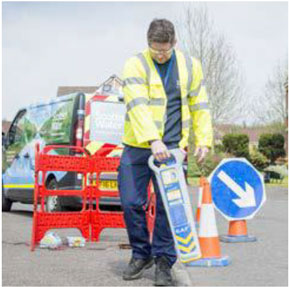
The final year of this investment period brought unique, unexpected challenges in the form of the Covid-19 pandemic. In-line with Scottish Government guidance, the majority of construction was paused on 23 March 2020. However, Scottish Water identified that some sites were critical to immediate service delivery and these remained active.
Scottish Water began a slow resumption of its projects from June 2020 to August 2020 following the Scottish Government's 'A Framework for Decision Making' which included details of the phased re-start for the construction sector. Safe working procedures were implemented at all sites to help mitigate the spread of the coronavirus.
Throughout the pandemic Scottish Water has continually gathered data to assess the impact on the investment programme:
- The cost of pausing construction during the initial lockdown period was some £12 million.
- The cost of re-mobilising the investment programme was estimate at £7m (and relates to additional safe working measures such as increased personal protective equipment (PPE), hygiene requirements…)
- An on-going additional cost of between 4-8% on projects in order to ensure compliance with safe working measures.
- As a result of the lockdown period many projects have experienced a delay in delivery of 4-6 months.
Monitoring progress
Scottish Water's progress in delivering the improvements is monitored and reported on by the 'Delivery Assurance Group'[3]. The group brings together key water industry stakeholders. It meets every three months and publishes its quarterly monitoring reports on the Scottish Government's website. The Water Industry Commission for Scotland also publishes annual reports focussing on Scottish Water's performance against the targets set during the Strategic Review of Charges for the 2015-21 period.
For this period, delivery continued to be tracked using the Overall Measure of Delivery (OMD). This provides a high level measurement of Scottish Water's overall progress in delivering its investment plan to achieve Ministers' objectives.
The OMD score starts at 0 and rises to 250 once all the required outputs are complete. The graph below shows the planned and actual delivery of the investment over the six-year period. The area within the green dotted lines represents +/- 2.5% of the OMD score which were applied during the last 2 years of the period. Performance is considered to be "on target" if it was above or within the green dotted lines.
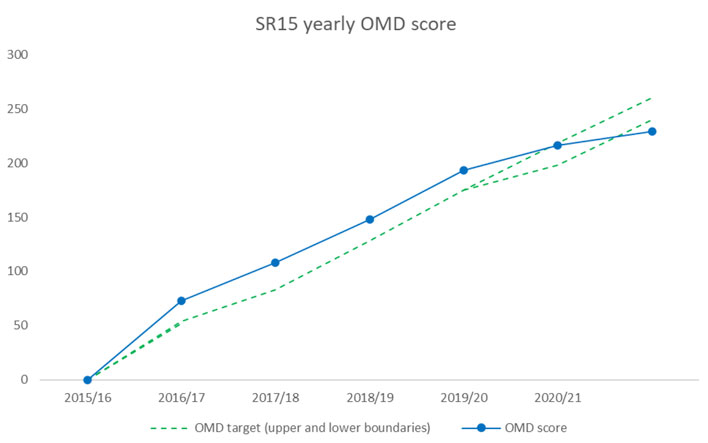
Scottish Water has achieved or exceeded its OMD target in each of the first 5 years of the period. As is to be expected in a large programme, some elements have been completed early while others will have been delivered later than planned. At the 31st of March 2021 Scottish Water's OMD position was behind target at 229 points, against a period-end OMD target range of 240 to 260 points (although it was within a revised target range of 227 – 231 points to take account of the impact of COVID-19). Prior to the pandemic, Scottish Water's forecast period-end performance was 240-243 points. Further details on the remaining projects are provided below.
Determining the cost of improvements
As economic regulator, the Water Industry Commission for Scotland (WICS) is responsible for determining the lowest reasonable overall cost of delivering services, including improvements, to customers. It does this as part of the process of setting charges for water and sewerage services, the 'Strategic Review of Charges'.
The final determination published in November 2014 was the culmination of the charge setting process for the 2015-21 period. The determination took account of information that was provided to WICS by Scottish Water, industry stakeholders and Ministers' policies on investment and charging.
The final determination established that the cost of delivering Ministers' objectives over the period would be some £450-£500 million per annum. Scottish Water's performance against the final determination for the 2015-21 period will be assessed by WICS in future performance reports.
Improvements delivered in 2015 to 2021
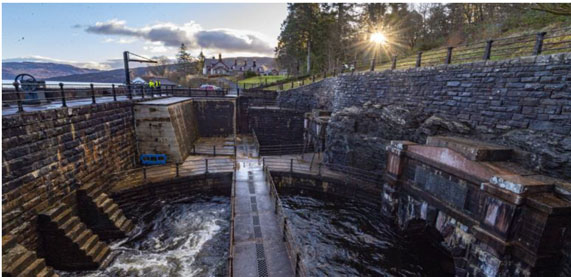
Scottish Water's investment programme for 2015-21 comprised more than 3,700 projects associated with delivering improvements to drinking water quality, environmental performance and customer service, and providing additional capacity to service new developments. Highlights include:
Strategic Glasgow Sewerage Scheme - Shieldhall storm water tunnel
The 5 kilometre-long Shieldhall storm water tunnel in the south of Glasgow was a key part of the metropolitan Glasgow Strategic Drainage Partnership programme to transform the management of rainfall in the city and the largest investment in the sewer network since Victorian times. The tunnel runs under Bellahouston Park, Pollok Park, along Titwood Road to Queen's Park where it ties into the existing sewer network. The project helps improve water quality in the River Clyde and its tributaries and reduces flooding issues at key locations including the Hampden area.
Haymarket sewer upgrade
The Haymarket Terrace project in Edinburgh reduced the risk of sewer flooding to 6 properties. The brick Victorian sewer, which was at capacity, was upgraded with a new 1.2 metre diameter sewer. The project was planned in detail with the City of Edinburgh Council to minimise traffic and business disruption.
New Inverurie Wastewater Treatment Works (WwTW)
A new wastewater treatment plant at Inverurie was opened. The plant uses award-winning 'Nereda' technology to deliver faster settlement, making the treatment process quicker and more efficient by avoiding the need for pumps and mixers. The investment will ensure the site can meet higher environmental standards in the Don and Urie river catchments and will provide improved capacity for future development.
New Tullich Water Treatment Works (WTW)
The construction and completion of the new Tullich Water Treatment Works means that more than 12,000 customers in the Oban area will continue to enjoy clear, fresh drinking water for years to come. The Tullich WTW supply zone reaches as far north of the town as Port Appin and as far south as the islands of Seil and Luing, and also includes the areas of Connel and Benderloch.
Major upgrade of Katrine Aqueduct
The Katrine Aqueduct has played a major part in providing wholesome water to the public in parts of greater Glasgow and central Scotland since the Victorian era. In early spring 2021, a major upgrade of this vital infrastructure was completed. The project will help improve the security of the water supply to customers, via two of the country's biggest water treatment works from Loch Katrine, for generations to come.
The sections below explain how Scottish Water's investment programme contributes to the Scottish Government's National Performance Framework, specifically the following indicators:
- Environment
- Communities
- Poverty
- Economy
Service standards
Standards of service are monitored through an industry wide measure called the 'overall performance assessment' (OPA). The OPA comprises a 'basket' of service standard measures, encompassing aspects of service that are most important to customers.
Scottish Water Customer Satisfaction increased from 92% in 2015 to 94.08% in 2021 showing its determined focus to listen to its customers.
OPA improved from 400 in 2015 to 404 in 2021.
Household CEM improved each year of the period from 82.60 in 2015 to 88.45 in 2021.
Scottish Water has invested £2 billion during the 2015-21 period in maintaining its assets to support the achievement of its OPA targets and maintain service to customers.
In 2015, service as measured by the OPA totalled 400 points out of a maximum score of 418.75. Scottish Water was set a target of achieving a minimum service level of 384 during 2015-21, and achieved this each year of the period. The score was above 400 in the last four years of the regulatory period.
Scottish Water has continued to improve its service to customers, with OPA performance outperforming its target and achieving a score of 404 in 2020-21. Scottish Water's service performance continues to be at a comparable level to the leading UK water companies.
Service improvements were noted across almost all of the areas that the OPA measures, including low pressure, leakage, environmental pollution incidents, drinking water quality[4], security of supply and unplanned water supply interruptions due to bursts.
In 2015-21 Scottish Water introduced a new Customer Experience Measure (CEM) designed to ensure that delivery of service to customers sits at the heart of what Scottish Water does and continues to be a key driver of performance. In 2014, following agreement with the Customer Forum, separate measures were introduced for household (hCEM) and non-household (nhCEM) customers. The purpose of the hCEM is to capture the service levels delivered to household customers and provide a robust means of measuring the quality of, and tracking changes in, the service experience provided to household customers. The purpose of the nhCEM is to inform and drive improvements in all non-household customers' service experience and how SW resolves any issues with services that may arise.
Leakage
Scottish Water has continued to reduce the level of leakage during the 2015-21 period, from 544 to 463 megalitres per day. Lower levels of leakage are beneficial as it reduces the volume of water extracted from the environment and treated, reduces costs and increases the reliability of water supplies to customers.
Leakage has reduced by a further 15% during 2015-21 – enough to supply over 200,000 households every day.
New strategic capacity
Scottish Water provides additional water and waste water strategic capacity, as and when required, to support the Scottish Government's purpose of increasing sustainable economic growth. At the end of the period, Scottish Water confirmed that it had provided additional water and waste water capacity for nearly 50,000 customers through over 140,000 new connections, meeting the Ministerial requirement for the 2015-21 period.
Additional capacity was provided to meet all the domestic strategic requirements of new developments.
Drinking water quality
During the 2015-21 period, improvements were made to drinking water assets in order to protect or improve the quality of drinking water provided at customers' taps. Some 3,800km of drinking water mains were cleaned, upgraded or replaced. 15 water treatment works were improved to comply with the standards set in the European Commission's Drinking Water Directive.
Case study
More than 80,000 customers in communities across Renfrewshire and south Paisley served by Muirdykes WTW benefitted from an upgrade involving the installation of a new filtration building and process – this also reduced the risk in the network of discoloured water caused by naturally-occurring manganese.
Overall Scottish Water delivered improvements to the quality and reliability of water treatment works serving over 2.5 million customers.
Scottish Water has also undertaken significant investment during 2015-21 to improve the reliability of water supply to thousands of customers.
Environmental protection
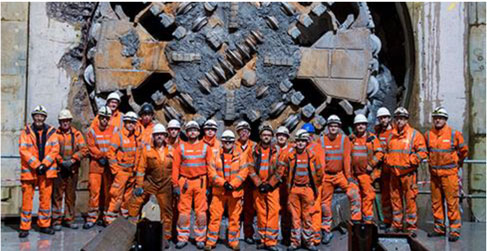
During the 2015-21 period improvements were made to waste water assets in order to protect or improve the environment and to comply with a number of European Directives.
Case study
The 5 kilometre-long Shieldhall storm water tunnel in the south of Glasgow was completed, a key part of the partnership programme to transform the management of rainfall in the city and the largest investment in the sewer network since Victorian times. The tunnel runs under Bellahouston Park, Pollok Park, along Titwood Road to Queen's Park where it ties into the existing sewer network. The project will improve water quality in the River Clyde and its tributaries and reduce flooding issues at key locations including the Hampden area.
23 wastewater treatment works (WwTW) were improved either to comply with existing licence requirements or to meet new and more stringent requirements and a total of 129 unsatisfactory intermittent discharges (mainly storm overflows from the sewer network) were improved.
During 2015-21, Scottish Water completed major waste water projects including at Inverurie WwTW. A new waste water treatment plant at Inverurie was opened. The plant uses award-winning 'Nereda' technology to deliver faster settlement, making the treatment process quicker and more efficient by avoiding the need for pumps and mixers. The investment will ensure the site can meet higher environmental standards in the Don and Urie river catchments and will provide improved capacity for future development.
A project at Kinghorn Bathing Water in Fife was completed to help improve the bathing water quality at Kinghorn beach. This involved constructing a new storm tank 12 metres deep into the ground.
Climate change mitigation and adaptation
Scottish Water's operational emissions at the end of the 2015-21 period were around 50% lower than the 2007 baseline year.
In 2020-21, despite the extremes in weather, Scottish Water generated a total of 40GWh of on-site, self-generated renewables using a portfolio of wind, hydro and solar schemes. In addition to renewable energy, Scottish Water's PFI partners generated an extra 32GWh from biogases produced by waste water treatment processes.
123 climate change vulnerability assessments were undertaken to understand the impacts of climate change on Scottish Water's ability to provide secure and reliable water and sewerage services in the future.
Scottish Water is one of the country's biggest electricity users and one of the three largest construction sector investors. Their assets need significant amounts of energy to operate, and significant greenhouse gas emissions are produced through supply chain activities such as maintenance and construction, as well as the running of buildings, fleet and treatment processes.
Their industry-leading Net Zero Emissions Routemap commits them to become net zero by 2040 and then go beyond. It will help reduce the impact on the environment, end the contribution to climate change and safeguard water and waste water services for future generations.
Delivering Greater Innovation
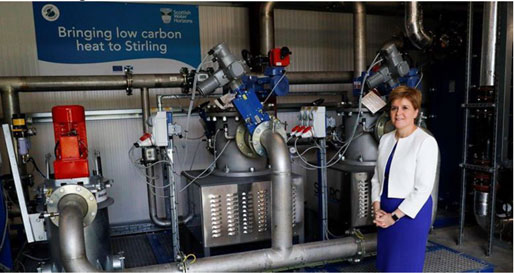
Working in partnership with Stirling Council, with additional funding from the Scottish Government, Scottish Water Horizons delivered a low carbon energy centre at Stirling WwTW. The energy centre comprises wastewater heat pumps, a gas combined heat and power engine (CHP) and back-up boilers supplying heat for a district heating network operated by Stirling Council. The CHP also supplies electricity to the WwTW.
Flooding
Experience gained in the delivery of previous investment programmes has shown that detailed studies are key tools for identifying appropriate solutions.
Weather conditions are increasingly challenging in Scotland with more intense storm conditions being experienced more often. Scottish Water has completed a number of projects to help protect customers from the risk of flooding including construction of the Shieldhall Tunnel above.

Scottish Water also completed a project in Paisley, which involved the construction of a one mile–long sewer and the installation of combined sewer overflows in the town centre. As well as reducing flood risk, this project will substantially reduce the frequency of spills from the sewer network into the Espedair Burn and White Cart Water in storm conditions, improving the river water quality in the two watercourses and, in turn, the River Clyde.
Scottish Water has also refined its Storm Water Management Strategy, which can be summarised as:
- allow no new or substantially re-developed site surface water connections into the existing combined network;
- work with all stakeholders on removing/reducing storm water from the existing combined network;
- supporting sustainable economic growth for all stakeholders;
- support sustainable urban drainage systems (SUDS) which feature place making blue-green city landscapes.
In short: "No more surface water in, and what's in out."
Out-performance
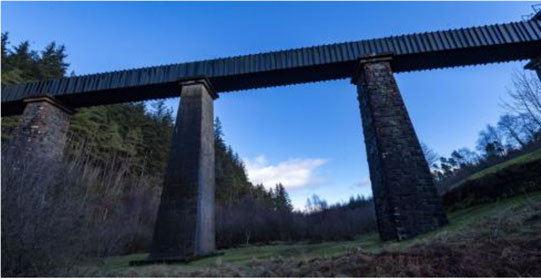
Service levels substantially higher than those required in the Final Determination
Out-performance can also be delivered through higher service levels as well as through delivering for less than the amounts set out in the WICS final determination. Scottish Water has consistently outperformed the targets set for the 2015-21 period. As well as outperforming the Overall Performance Assessment and Customer Experience Measure targets, achievements include:
- Pollution incidents – the Ministerial Target was at most 330 annually and Scottish Water outperformed in all 6 years.
- Low pressure - Ministerial Target of at most 100 properties. This was below 50 in 5 of the 6 years.
- Interruptions to supply greater than 6 hours - Ministerial Target of 13,000 properties annually. This was below 6,500 each year.
- Overall customer satisfaction - Above 90% in 5 of the 6 years, outturning at 94.08% in 2020-21.
- Leakage - Ministerial Target of 575 Ml/d and outperformed each year registering below 500Ml/d.
Projects remaining at the period end
As in any large scale investment programme, some projects were not fully completed at the end of the period. As highlighted above, this has been a particularly challenging investment period due to the impact of the Covid-19 pandemic.
From a total of over 3,700 projects monitored by the Delivery Assurance Group, 86 remain to be completed at March 2021 and 22 of these, while not fully complete, are already providing benefits to customers.
Of the projects remaining, 22 have delays solely attributed to the Covid-19 pandemic and these are expected to complete during 2021-22. A number of projects were initiated before March 2021 for delivery in the 2021-27 period in order to provide continuity of investment.
A summary of the delivery position at 31 March 2021 is shown at Annex A.
Improving the delivery of objectives – the Investment Planning and Prioritisation Framework (IPPF)
Recognising the need to be able to respond flexibly to the longer term challenges facing the industry and to cater for the need to carefully prioritise investment going forward, stakeholders worked together to co-create an Investment Planning and Prioritisation Framework (IPPF)[5] for the next investment period SR21.
The framework was developed to embrace Ethical Business Practices (EBP) and to align with the principles of Ethical Business Regulation (EBR)[6] - encouraging collaboration, openness, trust and transparency amongst stakeholders and involving them in dynamic cycles of prioritisation in the lead up to, and throughout, the 2021-27 period.
The Scottish Water investment programme will therefore no longer be fixed at the start of the period, but will build over time. To support this process, Scottish Water worked with stakeholders to co-create a Strategic Plan, which sets out their role in starting to deliver the long term Water Sector Vision.
Scottish Water is also working to develop a transformation plan. It will be a living document, which evolves over time, as Scottish Water better understands the long term challenges it will face.
Ahead of the period, Scottish Water worked with stakeholders to develop a long term analysis of 'business needs and opportunities'[7], which outlined the high level investment projections for a 25+ year planning horizon.
Stakeholders carried out an initial categorisation of the needs and opportunities included in this long term analysis, by assessing them against a set of pre-agreed criteria, using an independent and internationally recognised prioritisation technique (MoSCoW).
These priority needs are now being reviewed in light of the Ministerial Objectives for the period, the likely finance available for investment, the capacity and capability of the supply chain and the extent to which further study is required (to clarify the needs). This will allow Scottish Water to create an initial view of the type of needs and opportunities they expect to address across the 2021-27 regulatory period.
The investment requirements will remain under regular stakeholder review throughout the period to take account of emerging needs and changing priorities. The Investment Planning and Prioritisation Group (IPPG) has been created to manage this process, reviewing 'proposed Needs Lists' which will be promoted by Scottish Water. The IPPG will endorse the submission of quarterly Needs Lists to Scottish Ministers.
Once approved by Ministers, the needs and opportunities included on each of the 'Proposed Needs Lists' will be added to the 'Development List'. This will be a "living" document that will be shared with stakeholders and built upon throughout the period.
Needs or opportunities included on the 'Development List' will be progressed by Scottish Water until such time as a scoped project/study/maintenance allowance has been developed and an output or outputs defined. The defined output(s) will then be added to the 'Committed List' and will move in to Delivery.
Conclusion
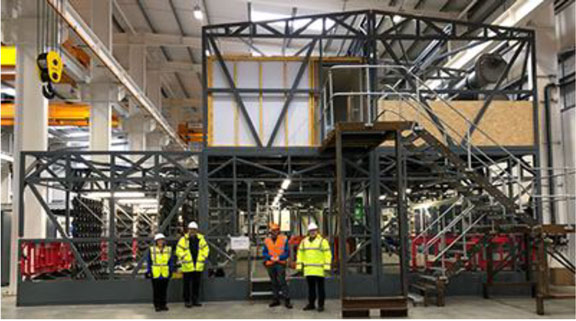
Overall, the Delivery Assurance Group recognises the benefits that Scottish Water has delivered for customers and the environment across the 2015-21 period.
Due to the impact of the Covid-19 pandemic, Scottish Water has not met its overall measure of delivery target at the end of the period. However, the Delivery Assurance Group is confident that this would have been achieved if delays had not arisen due to the pandemic. Despite this, Scottish Water has delivered major improvements to the quality of the drinking water that it supplies to its customers, in the wastewater it discharges to Scotland's environment and, through the provision of new capacity, has enabled economic growth.
The Delivery Assurance Group also recognises that significant improvements have been delivered in relation to customer service, with customers continuing to benefit from standards of service that are comparable with the leading UK water companies.
It is normal in a large investment programme of this type for some elements to be delivered ahead of, and others behind, the planned delivery dates. The Delivery Assurance Group has sought explanations from Scottish Water where projects have been delayed. Scottish Water has provided explanations and has assured the Delivery Assurance Group that there is a strong focus on delivering the remaining elements of the programme to ensure that benefits to customers are delivered as soon as possible.
Looking ahead to the 2021-27 period, the Delivery Assurance Group will build on the IPPF Process to ensure that the Scottish water industry continues to deliver efficient and effective services for the benefit of its customers and Scotland's environment.
Contact
Email: waterindustry@gov.scot
There is a problem
Thanks for your feedback